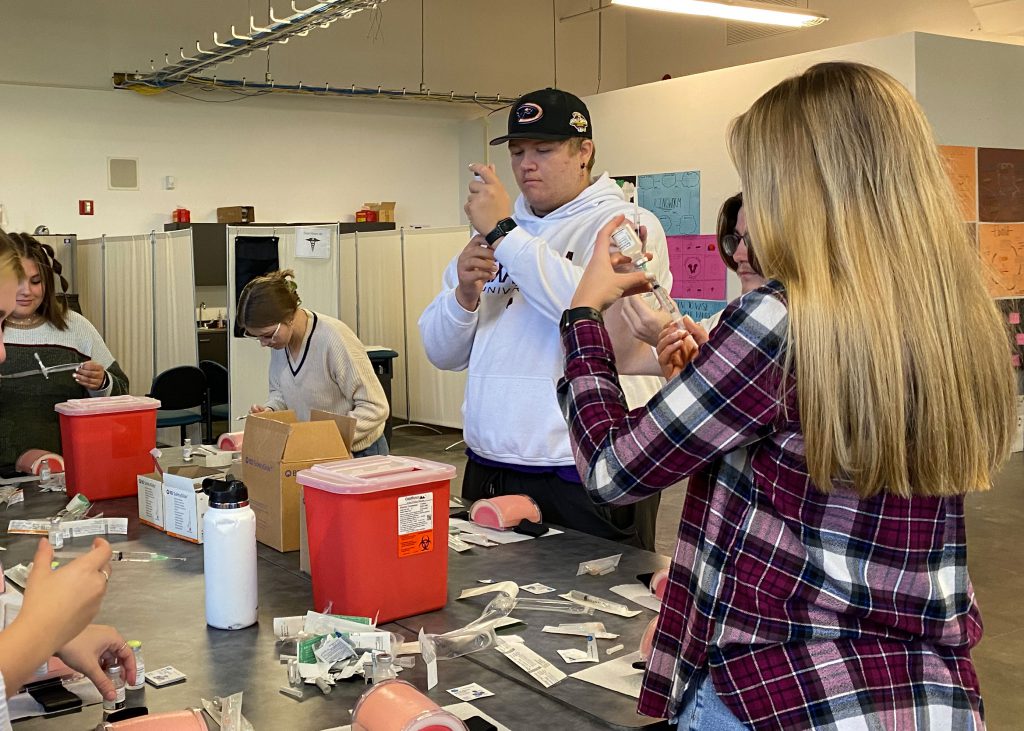Tag: Region 5
Medical assisting program helps fill growing demand for healthcare professionals

In 2019, School District 25 Career Technical Administrator for Pocatello’s Gateway Professional Technical Education program Rhonda Naftz recognized that many students interested in health professions didn’t want to pursue a career in nursing. Naftz researched potential programs to meet her students’ interests. She discovered that medical assistants (MA) do many routine administrative and clinical functions, creating additional time for doctors and nurses to care for their patients. The labor market data showed and still reports a dire need for health professionals nationwide, resulting in high demand for Medical Assistants in hospitals, clinics, and doctor offices.
Naftz approached the Division about piloting the state’s first secondary MA program. Naftz knew the program needed an instructor with both practical and classroom experience to succeed. She found that instructor in Kristina Pasquella. A graduate from Idaho State University’s MA program, Pasquella was working full-time in a local medical facility and also adjunct faculty in the ISU MA program.
“Our program creates an amazing pipeline into medical assisting or other healthcare classes.”
Kristina Pasquella

“I’d piloted quite a few education programs for mental health and healthy living programs in the past. As a kid, I always wanted to be a teacher, so creating the pilot program was really interesting and appealed to me,” said Pasquella.
Given Pasquella’s decade of experience as an MA, she worked with ISU and the State CTE Division to design a program giving students the real-world experiences they’d need to be successful. Her classroom looks like an actual medical clinic, complete with exam rooms and a waiting room stocked with posters and brochures created by her students. Students practice calling a patient from the waiting room, walking them to an exam room, taking vitals, asking questions, and recording the answers for the doctor to review. They also get to practice giving intradermal, intramuscular, and transdermal injections on an injection pad. One of their favorite activities is practicing drawing fake blood from realistic-looking silicone arms. Though students enjoy the clinical aspects of the program, they also learn clerical and administrative tasks like scheduling appointments, billing patients and insurance, and medical coding.

“Our program creates an amazing pipeline into medical assisting or other healthcare classes,” said Pasquella.
The partnership with ISU allows students to take to earn college credits for five of the six classes using Advanced Opportunities funds, meaning students pay nothing out of pocket, and their credits transfer seamlessly after graduation. About a quarter of the students who complete the program go right to work after graduation; others can go to CSI to earn a certificate or ISU to pursue a two-year degree.
Four years after its inception, 113 students have completed the program, with 43 more scheduled for this year. Interest in the program—from students and regional employers—continues to grow. Moving forward, Naftz says they’re planning on consolidating all the health profession programs into one building to better use resources and equipment and investigating adding a Certified Clinical Medical Assistant credential to the program.
“Medical programs are notoriously expensive to run, but there’s nothing like CTE to show real, tangible results and a direct correlation between investment and student success,” said Naftz. “We’re so grateful for the continued support of the Pocatello Chubbuck School District, the Division, and the legislature for this and all our CTE programs.”
 Official Government Website
Official Government Website